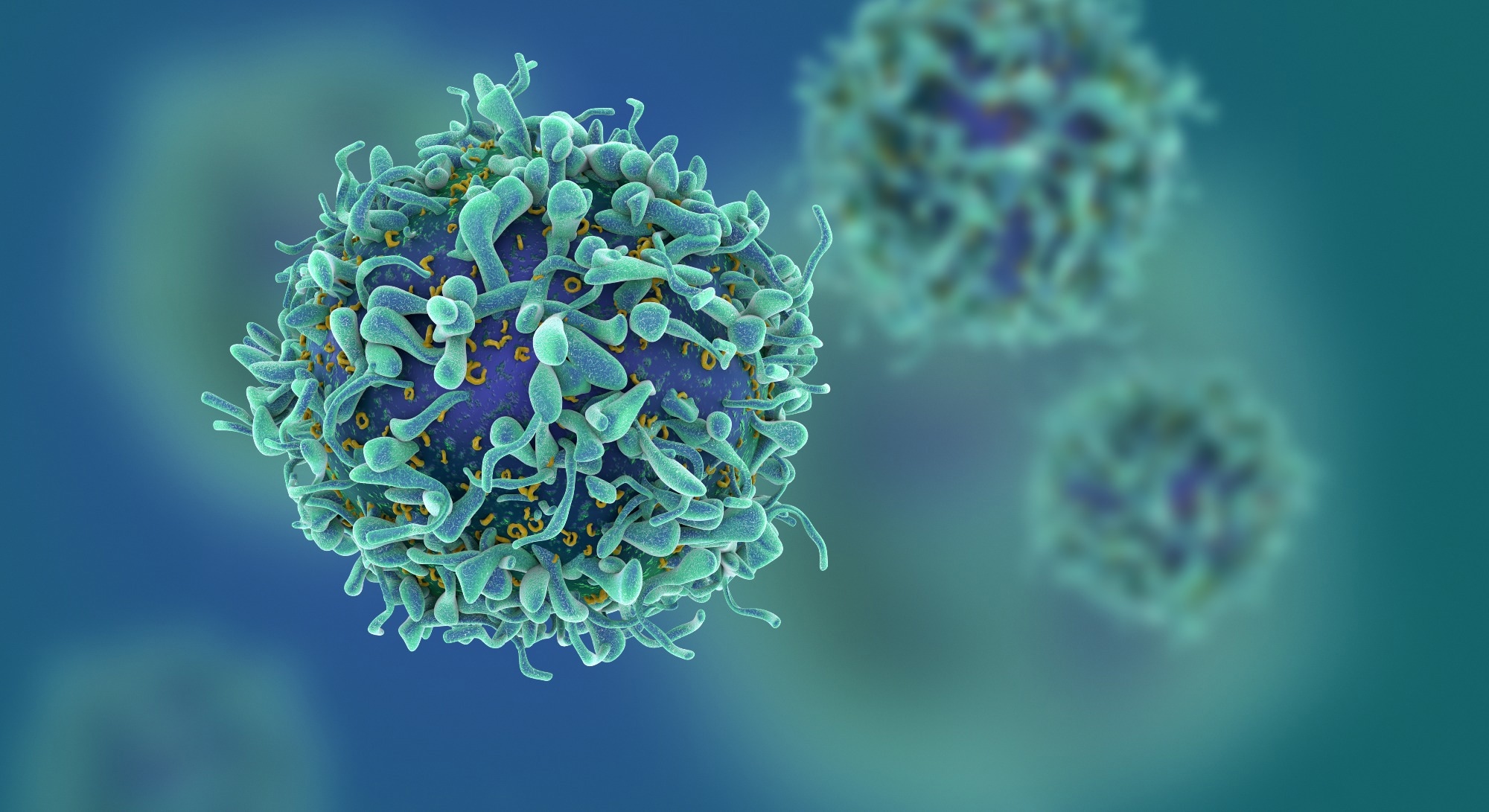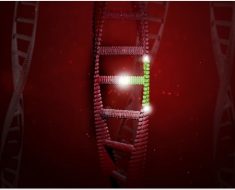In a recent study posted to the bioRxiv* server, researchers evaluated the anti-cancer therapeutic efficacy of two structurally-unrelated small molecules, PAV-617 and PAV-951.

Background
In cell culture experiments, PAV-617 and PAV-951 showed inhibitory activity against Monkeypox virus (MPXV) and human immunodeficiency virus (HIV). Javier and Butel (2008) observed similarities in how viruses and cancerous cells interact with a healthy host; for instance, both exploit natural selection as a powerful weapon to overcome host defenses. The difference is that while viruses co-evolve with the host or develop resistance mutation(s), cancers use only the latter in response to the selective pressure of treatments.
Furthermore, researchers showed that seven viruses were directly oncogenic. Examples include – Epstein-Barr virus (EBV), hepatitis B and C virus (HBV/HCV), and human T-lymphotropic virus 1 (HTLV-1). O’Shea (2005) suggested that studying viruses could facilitate the discovery of new cancer treatments by identifying cellular targets that drive tumorigenesis. Later, Müller-Schiffmann et al. developed a rather unconventional approach to antiviral drug discovery wherein they identified host allosteric sites essential for homeostasis repurposed by a viral infection. The hit compounds so identified were termed assembly modulators. They also validated these modulator compounds against the live virus in cell cultures of multiple viral families, Retroviridae, Orthomyxoviradae, and Poxviridae, to name a few.
About the study
Since both viruses and cancers drive departure from homeostasis, researchers in the present study set out to determine whether previously identified assembly modulators had any therapeutic activity against cancer to propose a novel method for the development of cancer therapeutics. They used a cell-free protein synthesis and assembly (CFPSA) system to screen a library of ~150,000 drug-like small molecules that blocked the assembly of viral capsids without inhibiting host protein synthesis. Further, they established a cancer-relevant counter screen and applied it to previously-identified assembly modulating compounds. They also performed in vivo screening and in vitro validation studies.
Study findings
PAV-617 and PAV-951, two assembly modulator antiviral compounds selected for their ability to arrest proliferation distinctively by a novel screen, were found to be cytotoxic to a wide range of neoplastic cell lines representing both rare and common cancers. Early in their drug optimization, these compounds performed the same as commercial anti-cancer drug Gemcitabine, albeit at 10 and 60-fold lower doses, and inhibited the growth of an A549 tumor in immunodeficient mice.
Drug resin affinity chromatography (DRAC) and photocrosslinking experiments indicated that PAV-617 and PAV-951 interacted with proteins that made dynamic multi-protein complexes. These findings suggested a disease model study pathogenesis in which previously unappreciated transient multi-protein complexes played an important role in the dynamics linking cellular proliferation to apoptosis.
Drug Discovery eBook

Compilation of the top interviews, articles, and news in the last year.
Download a copy today
Notably, the authors identified KAP1/TRIM28 as a common target of both PAV-617 and PAV-951 in mass spectrometry (MS) and western blot. Crosslinking experiments showed that KAP1 was present in a complex targeted by PAV-617 under native conditions but was lost upon denaturation. Perhaps, it was a distal component of the PAV-617 target multi-protein complex. For PAV-951, the data indicated a portion of KAP1 might be directly bound to the compound, suggesting the presence of more than one copy of KAP1 per multi-protein complex.
Previous studies have shown the involvement of KAP1 in an array of protein-protein interactions and functions. For instance, it played a crucial role in transcriptional activation of HIV and T-cell development. Other functions of KAP1 encompassed deoxyribonucleic acid (DNA) damage repair, transcriptional co-repression of genes, and post-translational modifications.
The researchers noted that subfractions of cellular KAP1 were selectively targeted by PAV-617 and PAV-951. Cross-depletion, where the flow-through of the PAV-617 resin was applied to a new PAV-951 resin further, indicated that the PAV 617-binding subfraction of KAP1 must be distinguishable from the PAV-951-binding subfraction of KAP1 because depletion of one did not fully deplete the other. These findings about PAV-617 and PAV-951 mirrored those made for PAV-104, a structurally unrelated assembly modulator with pan-respiratory antiviral activity.
Conclusions
The initial CFPSA capsid assembly screen identified novel targets relevant to viruses and cancer. Advancing the structure-activity-relationship (SAR) of PAV-617 and PAV-951 could further help determine whether the antiviral and anti-cancer targets are identical or not.
Though assembly-modulating compounds are structurally diverse, they displayed few common characteristics, including the targeting of multi-protein complexes, selectivity for a small fraction of the total amount of a given protein found in a cell, and allosteric mechanisms of action. Furthermore, they had remarkable activity against a broad category of pathogens (e.g., pan-viral family and pan-cancer) similar to the existing drugs. Also, these compounds appeared to resist the development of resistance. Further studies should determine whether resistance to mutations also holds for the anti-cancer subset of assembly modulators.
Effective cancer drugs have been developed based on several mechanisms and molecular genetic tools; however, none have attempted to treat cancer through the modulation of protein assembly. It makes working with PAV-617 and PAV-951 both risky and rewarding. The animal toxicity of PAV-617 and PAV-951 was higher than would be ideal for their clinical use; however, they were on par with existing cancer drugs. Since PAV-617 and PAV-951 are early compounds, further optimization will likely yield chemical analogs with substantially reduced toxicity and higher efficacy.
*Important notice
bioRxiv publishes preliminary scientific reports that are not peer-reviewed and, therefore, should not be regarded as conclusive, guide clinical practice/health-related behavior, or treated as established information.
- Anuradha F. Lingappa, Olayemi Akintunde, Connie Ewald, et al. (2022). Small Molecule Assembly Modulators with Pan-Cancer Therapeutic Efficacy. bioRxiv. doi: https://doi.org/10.1101/2022.09.28.509937 https://www.biorxiv.org/content/10.1101/2022.09.28.509937v1
Posted in: Medical Science News | Medical Research News | Healthcare News
Tags: Antiviral Drug, Apoptosis, Cancer, Capsid, Cell, Cell Culture, Cell Development, Chromatography, Compound, DNA, Drug Discovery, Drugs, Efficacy, Epstein-Barr Virus, Gemcitabine, Genes, Genetic, HBV, Hepatitis, Hepatitis B, HIV, Immunodeficiency, in vitro, in vivo, Mass Spectrometry, Monkeypox, Mutation, Proliferation, Protein, Protein Synthesis, Respiratory, Small Molecules, Spectrometry, T-Cell, Therapeutics, Tumor, Tumorigenesis, Virus, Western Blot

Written by
Neha Mathur
Neha is a digital marketing professional based in Gurugram, India. She has a Master’s degree from the University of Rajasthan with a specialization in Biotechnology in 2008. She has experience in pre-clinical research as part of her research project in The Department of Toxicology at the prestigious Central Drug Research Institute (CDRI), Lucknow, India. She also holds a certification in C++ programming.
Source: Read Full Article





